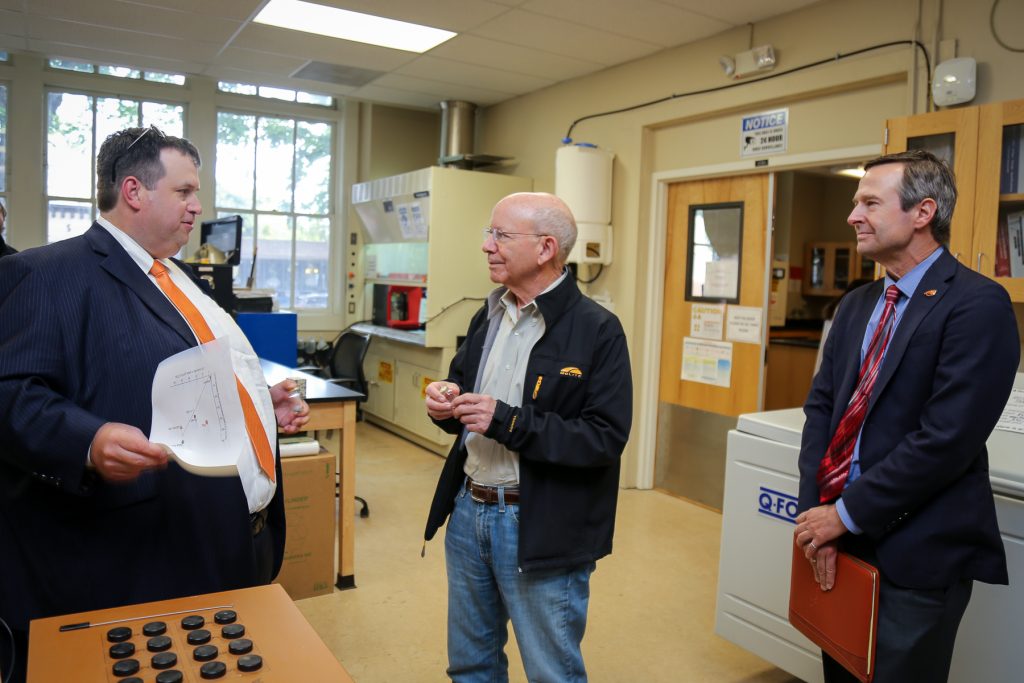In September 2017, the School of Civil and Construction Engineering recognized three faculty members for their contributions to students and the greater school.
Meghna Babbar-Sebens, associate professor of water resources engineering received the CCE Award for Excellence in Partnering, Andre Barbosa, assistant professor of structural engineering, the CCE Award for Research Excellence, and Kenny Martin, senior instructor, the CCE Award for Teaching Excellence.
Babbar-Sebens leads a $1.5 million project funded by the National Science Foundation (NSF), the U.S. Department of Agriculture’s (USDA) National Institute of Food and Agriculture. The grant is part of the new NSF-USDA INFEWS program focused on accelerating discovery and innovation at the nexus of food, energy, and water systems. The project is a collaboration between Oregon State and Indiana University-Purdue University Indianapolis IUPUI and at OSU, Babbar-Sebens collaborates with Ganti Murthy, associate professor in biological and ecological engineering, Jenna Tilt, assistant professor in geography, and Jeff Reimer, associate professor of applied economics. At IUPUI, Babbar-Sebens is working with Snehasis Mukhopadhyay and Arjan Durresi, both professors of computer and information science.
In summer 2017, Barbosa along with Oregon State colleagues and researchers from partner universities put an innovative two-story structure made of cross-laminated timber (known as CLT) panels through a series of seismic tests to determine how it would perform in an earthquake. The tests were conducted at the Natural Hazards Engineering Research Infrastructure at University of California San Diego (NEHRI@UCSD) site, which is funded by the National Science Foundation. Through the tests, they produced data that can be used in the design of a new generation of wood-frame high-rises, such as a four-story parking structure designed for Springfield, Oregon, and the 12-story Framework building in Portland. Scheduled to open in 2018, the 90,000-square-foot Framework structure will be the tallest mass-timber building in the United States.
Martin teaches undergraduate and graduate courses in engineering mechanics and structural engineering. In addition to teaching courses in statics, wood design, and temporary structures, Martin serves as a mentor and advisor to a number of graduate students, who appreciate his efforts greatly. “I really like Kenny Martin,” said student Alyssa Martin. “I had him for statics and he was one of the ones that really worked with me, just to kind of make sure I understood the whole concept of statics – and that you carry with you.”
These three faculty members are working to establish OSU as the partner of choice, lead research that will change the world, and provide a transformational experience for students – and ultimately create a better future.

















